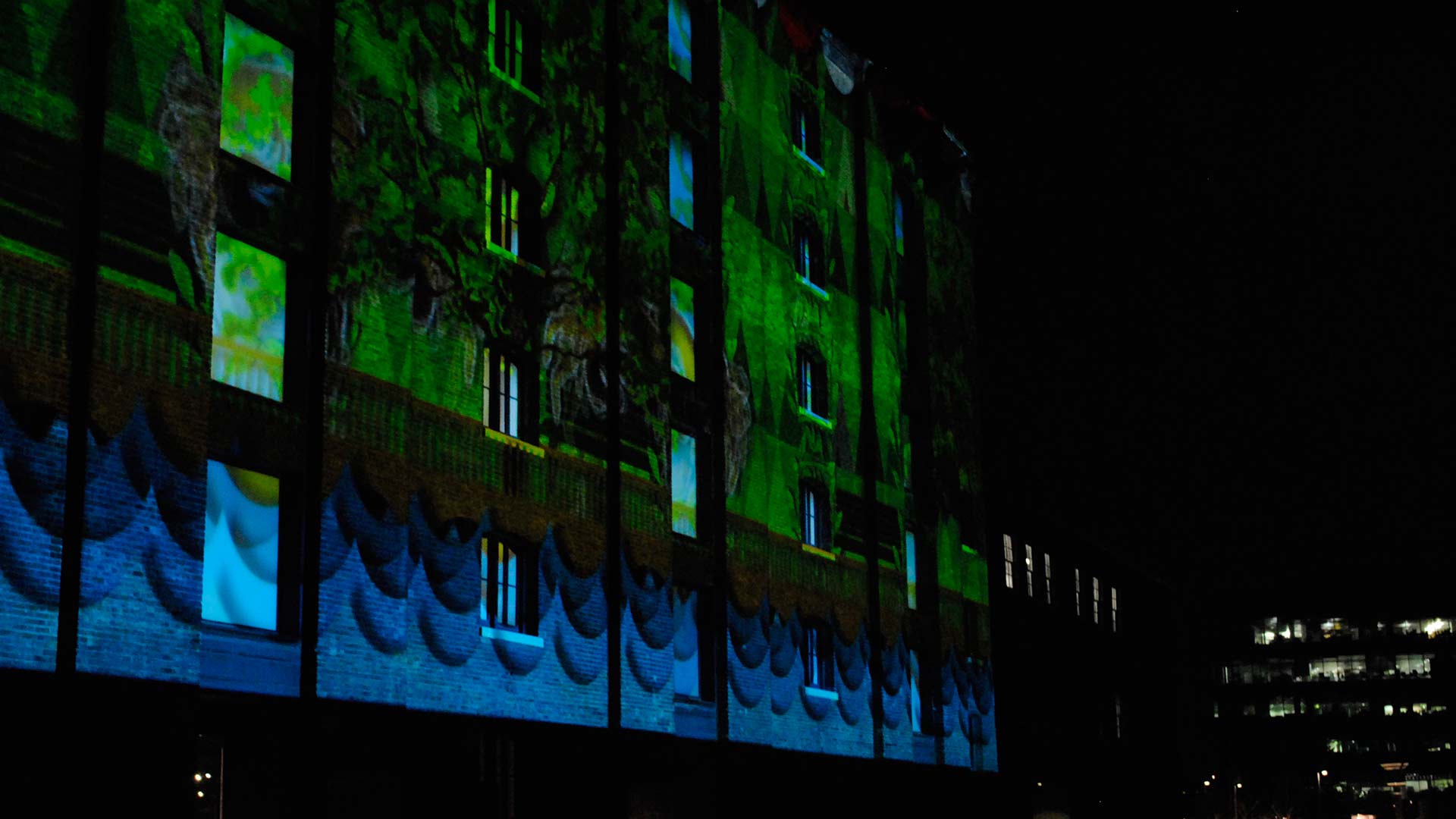Lighting up the night-time environment...
In recent years there’s been a sea of change in the way we consider external illumination. Brought about by a combination of austerity and maturity, these days we don’t often see garish colour changing “bling” lighting solutions, where buildings are turned into illuminated objects at night. Instead, developers and consultants alike are opting to provide a much more sophisticated solution. These considered schemes present the night-time space as a whole composition, inclusive of buildings, which form the backdrop to circulation and dwelling space.
This approach is subtle, with an interplay of tones and contrast – it’s far more considerate and inclusive of the people using the overall space, rather than simply setting up “money-shot” vistas. An interesting side product of this has been for the lighting designer to place as much emphasis on the unilluminated as the illuminated.
The UK night-time economy has an estimated value of £70 billion and can represent 25-50% of the hours in a day. It’s often when people have the most leisure time, so offers a greater opportunity for businesses to encourage trade. Good lighting can therefore be a key driver in engaging and enticing people and encouraging economical growth during these hours, and can even have a positive impact on anti-social behaviour.
Lighting festivals have become an overt and fashionable way of promoting the night-time economy on a temporary basis and are particularly relevant in towns and cities with a developed or developing tourist industry (see our blog of international lighting festivals here). Such events have been seen to generate increased footfall and spend, drawing visitors from both within and outside the catchment area to a cultural event, which in turn provides local businesses with opportunities to extend opening hours and their services. The recent Lumiere London (read our blog about it here) reported over a million visitors over its four days and the Heart of London Business Alliance estimate an increased footfall of 18% year on year.
Lighting Designer Graham Festenstein, who curates the light festival LewesLight in East Sussex said, “We found that 90% of attendees we surveyed after last year’s event would definitely visit a local bar or establishment during the next festival. Whilst a few years old now, published in 2011, The LUCI Report on the Cultural and Economic Benefits of Light Festivals has compiled some interesting statistics for a number of events around the world, with average daily spend attributed to visitors ranging from €29 per person per day in Glasgow, through to €116 in Gothenburg. When you consider that some festivals can draw visitors in the millions, this is a significant amount of money.”
If temporary events can have such an impact just imagine what a well-executed, permanent installation can do…
However, the definition of “well-executed” is important to consider because times are changing. Consider façade illumination for instance. Once the visual embodiment of an interesting nightscape the times of frivolous illumination that wastes energy are over. Façade lighting, whilst not entirely dead is now considered only for the most handsome of buildings. The danger of course is that we end up considering all lighting a frivolous waste of energy and that our night-time environments become dull, lifeless spaces. What we really need is to balance façade and space illumination and energy consumption levels, placing emphasis wherever it’s required to enhance the night-time environment and to let illuminance levels fall off wherever it isn’t.
What is essential is that the façade is considered part of the landscape – especially at ground-floor level.
This style of lighting is of course not new. Pioneered by the likes of Derek Phillips Associates and the Lighting Design Partnership in the 1980s, careful consideration was given to master planning of entire spaces to carefully balance illumination levels with adjacent spaces and buildings and, most importantly, reflect the needs of the end user.
Few local authorities, developers and planners commission such lighting studies and of those that do, even fewer see the light of day. Instead, projects have tended to take a short-sighted view where the emphasis has been on the developer’s site and not the surrounding environment. This is particularly frustrating when architects go to such pains to consider the juxtaposition of each site in context of adjacent surroundings and buildings.
It’s a shame that today so many lighting master plans have fallen by the wayside. In London there’s almost no cohesive thinking from borough to borough or area to area, resulting in a cacophony of light and each project competing with the next.
This is an even bigger shame when you consider the opportunities we have in London to reset the bar for the planning of light. Right now we’ve three magnificent opportunities to show the world how carefully planned, low-energy lighting can create convivial spaces that encourages use and aids the economy. First off there’s Battersea Power Station – this has the opportunity to be a carefully planned “Town within a City” where a bustling nightlife can exist. Secondly, the Nine Elms regeneration (where the Power Station development is actually located) has the opportunity to show how a variety of developers and planners can work together to produce a cohesive, connected environment. This is particularly important when elements of the individual sites will end up under the control of the local authority or TfL. Then thirdly there’s the old Chelsea Barracks development. It’s already attracted debate and attention, yet with its Middle Eastern backers it has the potential to be the premier destination for considered, well-planned night-time illumination that raises the bar for sustainable lighting design.
Time will tell for each of these projects. But if each developer and their chosen lighting designers place as much emphasis on planning the lighting as they do the landscape, then we stand on the cusp of a genuinely unique opportunity to raise the bar in the use of light to enhance the night-time environment and overall economy in key areas of central London.
Image: Amanda Tichenor


